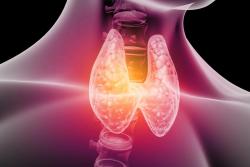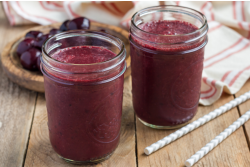“We should therefore think of metabolic disease as a disease of the immune system too.” Dr. Aseem Malhotra
Obesity33 and vitamin D34 are heavily discussed topics given the current pandemic. With the prevalence of metabolic syndrome (insulin resistance, hypertension, abdominal obesity, and high blood lipids)35 and vitamin D deficiency,36 and their emerging association with COVID-19,37,38 we are keen to shine a light on how and why they can drive low immunity.
Overweight individuals tend to be depleted in vitamins and minerals.39 This usually arises due to over-consumption of micronutrient-scarce, ultra-processed foods and poor gut health. Vitamin D deficiency is particularly common.40,41 Strikingly, a very low carbohydrate diet has been shown to independently improve vitamin D status by supporting weight loss!42 In addition to body weight, there are several other common drivers of low vitamin D, including low sunlight exposure, 43,44 pregnancy,45 old age,46 dark or covered skin,47 low magnesium status,48 and digestive surgery (e.g. gastric bypass,49 gallbladder removal50). Most of us will likely resonate with at least a few of these. If so, your vitamin D level is probably sub-optimal and in need of optimisation.
Vitamin D can reduce risk of infections, especially respiratory tract infections.51,52 It supports the production of anti-microbial substances53 and helps to inhibit microbial entry into the lungs by making lung tissue less permeable.54 It even reduces the risk of immune complications by helping to prevent the inflammatory ‘cytokine storm’ which can otherwise cause profound lung tissue damage.55,56 Beyond the immune system, vitamin D supports blood pressure57 and blood glucose regulation,58 which is significant since cardiovascular issues and diabetes can increase the risk of serious infection.59
Inflammation driven by obesity is itself a risk factor for low immunity.60,61 Excess body fat produces molecules called proinflammatory cytokines, which increase inflammation in the body. This background inflammation is often compounded by other drivers of inflammation, such as low vitamin D and omega-362 status, intestinal hyperpermeability,16 poor sleep,63 and alcohol.64 This toxic combination allows inflammation to become chronic. Inflammation is itself a source of stress on the body,65 which can drive a vicious cycle of chronic inflammation, high stress, and low immunity! In this scenario, the immune system is so busy mounting an unnecessary inflammatory response that it cannot properly defend us against pathogen exposure, increasing infection risk.
Not only this, when an obese individual picks up an infection, they are more likely to experience immune complications.The cytokine storm is thought it to be a major driver of lung injury and increased mortality from viral respiratory infections, including COVID-19,66 and obesity is a significant risk factor.67 High blood glucose levels68,69 and sleep apnea,70 which usually co-present with obesity, may increase the risk further.
A powerful way to preventively support your immunity and all-round health, is to support weight management and metabolic health, and an optimal vitamin D status. As Martineau and Forouhi (2020) said about optimising vitamin D, in particular, in light of the current pandemic: “there is nothing to lose from their implementation, and potentially much to gain.” 34
Got a question?
The brand you can talk to:
We have a team of Nutritionists at the end of our advice line, open to you, for product support and advice (5 days a week). 0121 433 8702 or clinicalnutrition@biocare.co.uk
Or head to our advice page.
Not registered for an account with BioCare®?
You can register now to receive up to date news, product information and exclusive offers whether you are a consumer, practitioner or retailer.
References
34. Martineau AR, Forouhi NG. Vitamin D for COVID-19: a case to answer? Lancet Diabetes Endocrinol. 2020;8(9):735-736. doi:10.1016/S2213-8587(20)30268-0
35. Saklayen MG. The Global Epidemic of the Metabolic Syndrome. Curr Hypertens Rep. 2018;20(2). doi:10.1007/s11906-018-0812-z
36. Holick MF. The vitamin D deficiency pandemic: Approaches for diagnosis, treatment and prevention. Rev Endocr Metab Disord. 2017;18(2):153-165. doi:10.1007/s11154-017-9424-1
37. Malhotra A, Kamepalli RK, Bamrah JS. Perspective: Poor metabolic health is a major issue for increased COVID-19 mortality in BAME groups. The Physician. 2020;6(2). doi:10.38192/1.6.2.4
38. Grant WB, Lahore H, McDonnell SL, et al. Evidence that vitamin d supplementation could reduce risk of influenza and covid-19 infections and deaths. Nutrients. 2020;12(4). doi:10.3390/nu12040988
39. McKay J, Ho S, Jane M, Pal S. Overweight & obese Australian adults and micronutrient deficiency. BMC Nutr. 2020;6(1):12. doi:10.1186/s40795-020-00336-9
40. Carrelli A, Bucovsky M, Horst R, et al. Vitamin D Storage in Adipose Tissue of Obese and Normal Weight Women. J Bone Miner Res. 2017;32(2):237-242. doi:10.1002/jbmr.2979
41. Vranić L, Mikolašević I, Milić S. Vitamin D deficiency: Consequence or cause of obesity? Med. 2019;55(9). doi:10.3390/medicina55090541
42. Perticone M, Maio R, Sciacqua A, et al. Ketogenic diet-induced weight loss is associated with an increase in Vitamin D levels in obese adults. Molecules. 2019;24(13). doi:10.3390/molecules24132499
43. Simpson S, Blizzard L, Otahal P, Van Der Mei I, Taylor B. Latitude is significantly associated with the prevalence of multiple sclerosis: A meta-analysis. J Neurol Neurosurg Psychiatry. 2011;82(10):1132-1141. doi:10.1136/jnnp.2011.240432
44. Sowah D, Fan X, Dennett L, Hagtvedt R, Straube S. Vitamin D levels and deficiency with different occupations: A systematic review. BMC Public Health. 2017;17(1). doi:10.1186/s12889-017-4436-z
45. Hollis BW, Johnson D, Hulsey TC, Ebeling M, Wagner CL. Vitamin D supplementation during pregnancy: Double-blind, randomized clinical trial of safety and effectiveness. J Bone Miner Res. 2011;26(10):2341-2357. doi:10.1002/jbmr.463
46. Lips P. Worldwide status of vitamin D nutrition. J Steroid Biochem Mol Biol. 2010;121(1-2):297-300. doi:10.1016/j.jsbmb.2010.02.021
47. Hatun S, Islam Ö, Cizmecioglu F, et al. Subclinical vitamin D deficiency is increased in adolescent girls who wear concealing clothing. In: Journal of Nutrition. Vol 135. American Institute of Nutrition; 2005:218-222. doi:10.1093/jn/135.2.218
48. Uwitonze AM, Razzaque MS. Role of magnesium in vitamin d activation and function. J Am Osteopath Assoc. 2018;118(3):181-189. doi:10.7556/jaoa.2018.037
49. Johnson JM, Maher JW, DeMaria EJ, Downs RW, Wolfe LG, Kellum JM. The long-term effects of gastric bypass on vitamin D metabolism. Ann Surg. 2006;243(5):701-704. doi:10.1097/01.sla.0000216773.47825.c1
50. Polat HB, Beyazal MS. The effect of cholecystectomy on 25-hydroxyvitamin D levels and bone mineral density in postmenopausal women. Arch Osteoporos. 2018;13(1). doi:10.1007/s11657-018-0458-0
51. Sabetta JR, Depetrillo P, Cipriani RJ, Smardin J, Burns LA, Landry ML. Serum 25-hydroxyvitamin D and the incidence of acute viral respiratory tract infections in healthy adults. PLoS One. 2010;5(6). doi:10.1371/journal.pone.0011088
52. Pham H, Rahman A, Majidi A, Waterhouse M, Neale RE. Acute respiratory tract infection and 25-hydroxyvitamin D concentration: A systematic review and meta-analysis. Int J Environ Res Public Health. 2019;16(17). doi:10.3390/ijerph16173020
53. Beard JA, Bearden A, Striker R. Vitamin D and the anti-viral state. J Clin Virol. 2011;50(3):194-200. doi:10.1016/j.jcv.2010.12.006
54. Chen H, Lu R, Zhang Y guo, Sun J. Vitamin D Receptor Deletion Leads to the Destruction of Tight and Adherens Junctions in Lungs. Tissue Barriers. 2018;6(4):1-13. doi:10.1080/21688370.2018.1540904
55. Ramos-Martínez E, López-Vancell MR, Fernández de Córdova-Aguirre JC, et al. Reduction of respiratory infections in asthma patients supplemented with vitamin D is related to increased serum IL-10 and IFNγ levels and cathelicidin expression. Cytokine. 2018;108:239-246. doi:10.1016/j.cyto.2018.01.001
56. Grant WB. Vitamin D Supplementation Could Reduce the Risk of Type A Influenza Infection and Subsequent Pneumonia. Pediatr Infect Dis J. 2010;29(10):987. doi:10.1097/INF.0b013e3181e50e10
57. Mirhosseini N, Vatanparast H, Kimball SM. The association between serum 25(OH)D status and blood pressure in participants of a community-based program taking vitamin D supplements. Nutrients. 2017;9(11). doi:10.3390/nu9111244
58. Foroughi M, Maghsoudi Z, Askari G. The effect of Vitamin D supplementation on blood sugar and different indices of insulin resistance in patients with non-alcoholic fatty liver disease (NAFLD). Iran J Nurs Midwifery Res. 2016;21(1):100-104. doi:10.4103/1735-9066.174759
59. Zhou F, Yu T, Du R, et al. Clinical course and risk factors for mortality of adult inpatients with COVID-19 in Wuhan, China: a retrospective cohort study. Lancet. 2020;395(10229):1054-1062. doi:10.1016/S0140-6736(20)30566-3
60. Ellulu MS, Patimah I, Khaza’ai H, Rahmat A, Abed Y. Obesity & inflammation: The linking mechanism & the complications. Arch Med Sci. 2017;13(4):851-863. doi:10.5114/aoms.2016.58928
61. Andersen CJ, Murphy KE, Fernandez ML. Impact of obesity and metabolic syndrome on immunity. Adv Nutr. 2016;7(1):66-75. doi:10.3945/an.115.010207
62. Dinicolantonio JJ, O’Keefe JH. Importance of maintaining a low omega-6/omega-3 ratio for reducing inflammation. Open Hear. 2018;5(2):946. doi:10.1136/openhrt-2018-000946
63. Abstract 17806: Sleep Quality and Duration are Associated with Higher Levels of Inflammatory Biomarkers: the META-Health Study | Circulation. Accessed October 18, 2020. https://www.ahajournals.org/doi/abs/10.1161/circ.1...
64. Wang HJ, Zakhari S, Jung MK. Alcohol, inflammation, and gut-liver-brain interactions in tissue damage and disease development. World J Gastroenterol. 2010;16(11):1304-1313. doi:10.3748/wjg.v16.i11.1304
65. Pongratz G, Straub RH. The sympathetic nervous response in inflammation. Arthritis Res Ther. 2014;16(1):504. doi:10.1186/s13075-014-0504-2
66. Mahmudpour M, Roozbeh J, Keshavarz M, Farrokhi S, Nabipour I. COVID-19 cytokine storm: The anger of inflammation. Cytokine. 2020;133:155151. doi:10.1016/j.cyto.2020.155151
67. Dugail I, Amri EZ, Vitale N. High prevalence for obesity in severe COVID-19: Possible links and perspectives towards patient stratification. Biochimie. Published online 2020. doi:10.1016/j.biochi.2020.07.001
68. Milner JJ, Beck MA. The impact of obesity on the immune response to infection. In: Proceedings of the Nutrition Society. Vol 71. Proc Nutr Soc; 2012:298-306. doi:10.1017/S0029665112000158
69. Gan YH. Host Susceptibility Factors to Bacterial Infections in Type 2 Diabetes. PLoS Pathog. 2013;9(12):1-3. doi:10.1371/journal.ppat.1003794
70. Miller MA, Cappuccio FP. A systematic review of COVID-19 and obstructive sleep apnoea. Sleep Med Rev. 2021;55:101382. doi:10.1016/j.smrv.2020.101382





